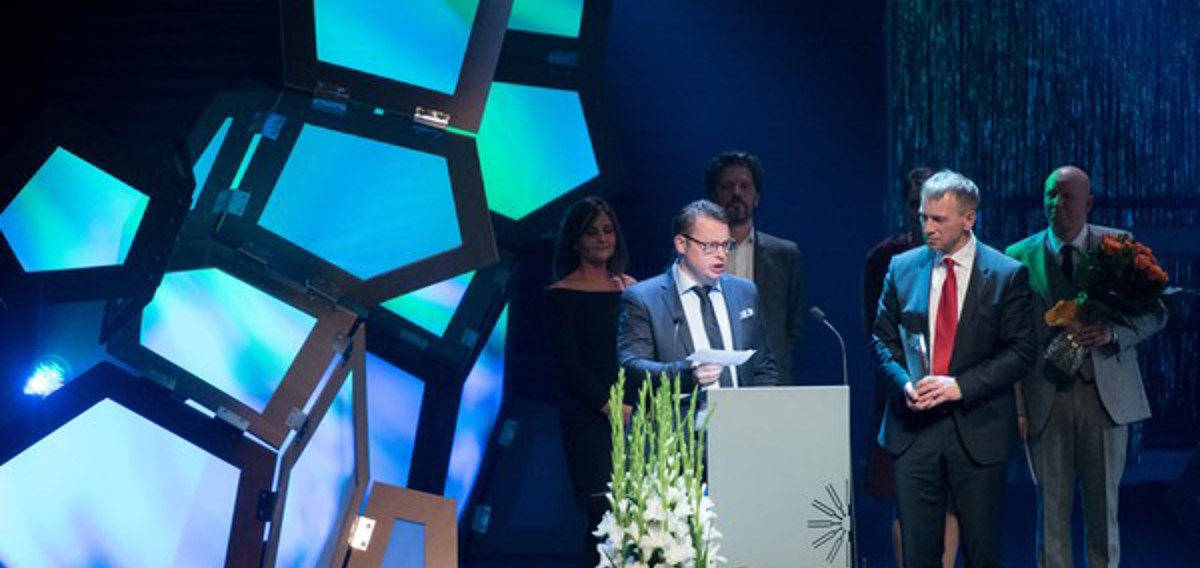SEV the Nordic Council Nature and Environment Prizewinner 2015

Faroe Islands, an isolated archipelago in the North Atlantic Sea, between Iceland and Scotland, have ambitious goals for a bright green energy future. Due to its favourable site conditions, the islands are surrounded by renewable energy in the form of hydro, wind, tides and waves, and to a certain extent solar energy.
Since the early nineties, the share of renewable energy in the electricity sector in the Faroe Islands has been approximately 40% hydro and wind, but that is about to change in the years to come.
Prior to COP15 in Copenhagen in 2009, the Faroese Parliament agreed to comply with the Kyoto Protocol, and one of the goals is to increase the share of renewable energy in the electricity sector to 75% by 2020.
The goal has since been raised to an even higher level by SEV, the Faroese electrical company, announcing a 100% renewable electricity sector by 2030. The Faroese Government has backed this vision in the coalition agreement, signed in September 2015, stating that all onshore electricity production should be green by 2030, and that at least 50% of the households should be heated by renewable energy by 2030.
Prize winner
In October 2015, SEV received the Nordic Council Nature and Environment Prize 2015 for itscontinued innovation and development that already have carried the islands forward on the green path.
The Adjudication Committee stated:
“The prize goes to the Faroese electricity company SEV for its ambitious targets and innovation. SEV’s work is not only important for the phasing in of renewable energy in the Faroe Islands, but also for the European grid as a whole.
The creative nature of its effort to reduce dependency on fossil fuels make SEV a worthy recipient of the Nordic Council Nature and Environment Prize 2015.”
“We see ourselves as a live laboratory, where new and innovative solutions could be developed and tested in a small but full-scale environment”, states Hákun Djurhuus, CEO of SEV.
One of the recent renewable energy projects is the Húsahagi wind farm, inaugurated in October 2014. This wind farm is expected to increase the share of renewable energy by 12 percentage points, from 48% in 2014 to 60% in 2015.
A battery system for the Húsahagi windfarm is currently under development. The system is designed to store the electricity generated by the turbines and then release the stored power into the grid for brief moments – seconds or minutes – according to demand. The main objective of the battery system is to stabilise the fluctuating power production from the wind farm and thus help to secure a more stable electricity supply for the Faroese consumers.
With the new Húsahagi wind farm in place, the Faroe Islands have already experienced hours with instantaneous wind penetration exceeding 80%. With this amount of wind penetration, the Faroe Islands meet challenges that Continental Europe will meet in a few years. In order to mitigate these challenges, innovative solutions will be developed and tested in a small but full-scale environment. If successful, these solutions could be adapted for the European grid in the future.
“The windfarm at Húsahagi together with the battery system is a major achievement in our green energy strategy, and a significant step toward realising our goal of 100% green electricity production by 2030”, states Hákun Djurhuus, CEO of SEV.
Other technological improvements
Over the years, SEV has closely monitored ongoing research and development abroad in the use of renewable energy, and has adopted and implemented new systems and technologies as they became available. A confluence of advances in several technical areas is now allowing SEV to successfully integrate more wind energy into the Faroese electrical grid.
“The recent years, SEV has retrofitted all hydro and fossil fuelled power plants in order to handle the penetration of fluctuating renewable energy. Technological improvements, coupled with the unique natural resources in the Faroe Islands, are proving very favourable to advancing our green energy strategy”, notes Terji Nielsen, R&D Manager.
Nielsen also comments that the wind turbines that SEV has deployed are more advanced and more adaptable to the fluctuating wind conditions than its previous wind turbines, and the ancillary electrical equipment now installed is better suited to the small isolated grid.
The power hub, developed under the EU funded ‘Twenties’ project, is another new system that allows more wind into the grid. The power hub monitors the energy consumption for large industrial consumers, and disconnects specific consumer units in case of a severe local frequency deviation. The power hub stabilises the grid and makes it able to absorb the inherent fluctuations in wind power.
Together with the Faroese University, SEV has mapped the tidal potential around the islands, and preliminary assessments indicate that the tidal potential is enormous. SEV is consequently following the development in tidal technologies closely.
In addition, ongoing improvements and the implementation of new technology both at the oil-fired power plants and the hydropower plants have enabled these power plants to be better integrated with, for example, the fluctuating wind energy production. Finally, a new control system will be implemented to gain the most optimal use of all the renewable resources available.
“When all is said and done, SEV is fully prepared to meet the green challenges of the future, but continued innovation and technological development is a prerequisite for reaching these ambitious goals”, states Terji Nielsen, R&D Manager at SEV.
